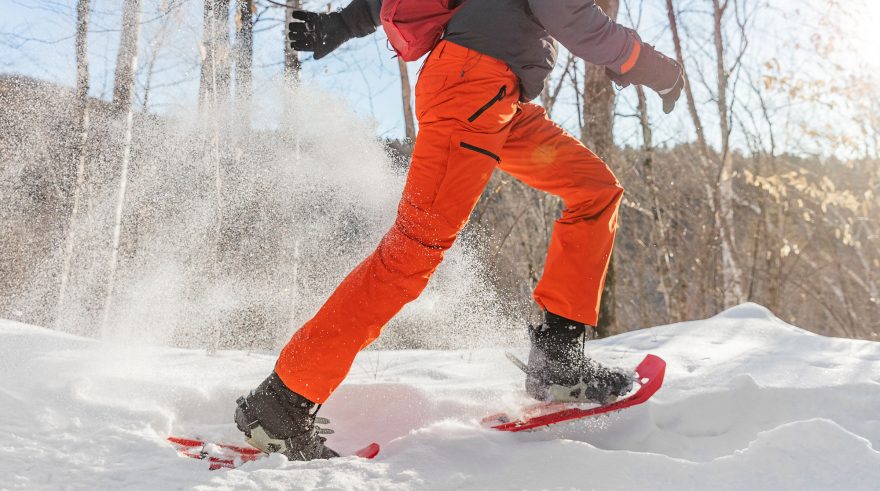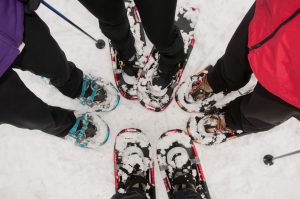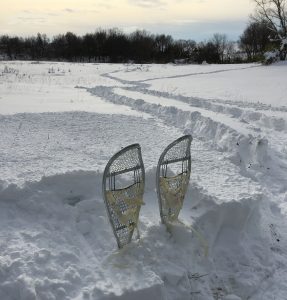
Image by Maridav, Shutterstock
Once the snow begins to pile up and the mercury drops, many outdoor enthusiasts are forced indoors to maintain their exercise regimen. Running on treadmills and using other gym equipment can become mundane and boring, compelling most to stop. However, there are amazing activities that can be done during the winter months: Donning a pair of cross-country skis or a snowboard can have tremendous health benefits, as a couple of examples, but I’ve noticed that snowshoeing is increasing as a popular winter sport.
This highly accessible activity has become an exceptional cardiovascular workout and can burn up to 1,000 calories per hour. Just snowshoeing across a flat trail can consume more calories than walking at the same pace for an hour. For more advanced snowshoers, the results can escalate dramatically when the speed and the difficulty of the terrain is intensified. It can increase your endurance while also strengthening your core and improving agility.
Adding this winter hobby to your exercise schedule is a great way to keep in shape when it’s cold outside.

Image by Debbie Galbraith, Shutterstock
Snowshoeing can be a low impact muscle building activity that primarily focuses on working the quads, hamstrings and calf muscles. This can be great option for people with knee problems as the snow provides a cushion, making it highly recommended choice for the elderly. Equipping a set of trekking poles can help work the arms, back and shoulders as well. Other benefits include helping to alleviate muscles soreness, weight loss and improving sleep quality.
Besides physical benefits, mental health benefits can help boost your mood and confidence. Being active during the winter can aid in the elimination of seasonal depression, which can be brought on by the dark and cold weather. Getting outside to enjoy fresh air can enhance a sense of well-being through being able to reconnect with nature. Scientists have started to investigate the positive effects that can come from being outdoors and the odors associated with the experience. In one instance, a trail that meanders through stands of pine trees offer a crisp aroma that has a calming effect and the potential to decrease stress levels.
If this doesn’t make you want to get outdoors, think about the germs and stagnant air you will not be breathing in at your local gym.
With the hectic schedules of today’s society, it can be incredibly advantageous to get back to being connected to nature. Being exposed to more natural surroundings can make one feel better and allow for better responses. There have been studies completed that show regularly spending time outside in nature can decreases stress levels. Snowshoeing is a great way to stay connected with the outdoors even when the weather isn’t quite as warm and welcoming. It can help you maintain your energy levels and focus during the doldrums of winter.

Image by Joel Herrling
Amid all the equipment necessary for skiing and snowboarding along with lift tickets, you only need a pair of snowshoes to enjoy this activity. They can be basic or extravagant; I have traveled numerous miles in an aluminum pair purchased from an Army/Navy store.
This activity does not require miles of pristine wilderness, although that could make for some breathtaking scenery and experience. Just head out to your local park after a snowstorm. I know of several county parks around my location in the Northeast U.S. that offer group treks, even offering some night outings. Once you get past the eeriness, there is something quite magical about snowshoeing across a fresh blanket of snow underneath a full moon. If there is snow, then you can snowshoe. I encourage you to get out there and give it a try.
Joel M. Herrling is a freelance outdoors writer/photographer in central New York. He enjoys spending time in the outdoors with his family.
 Your Privacy Choices
Your Privacy Choices
 The
The